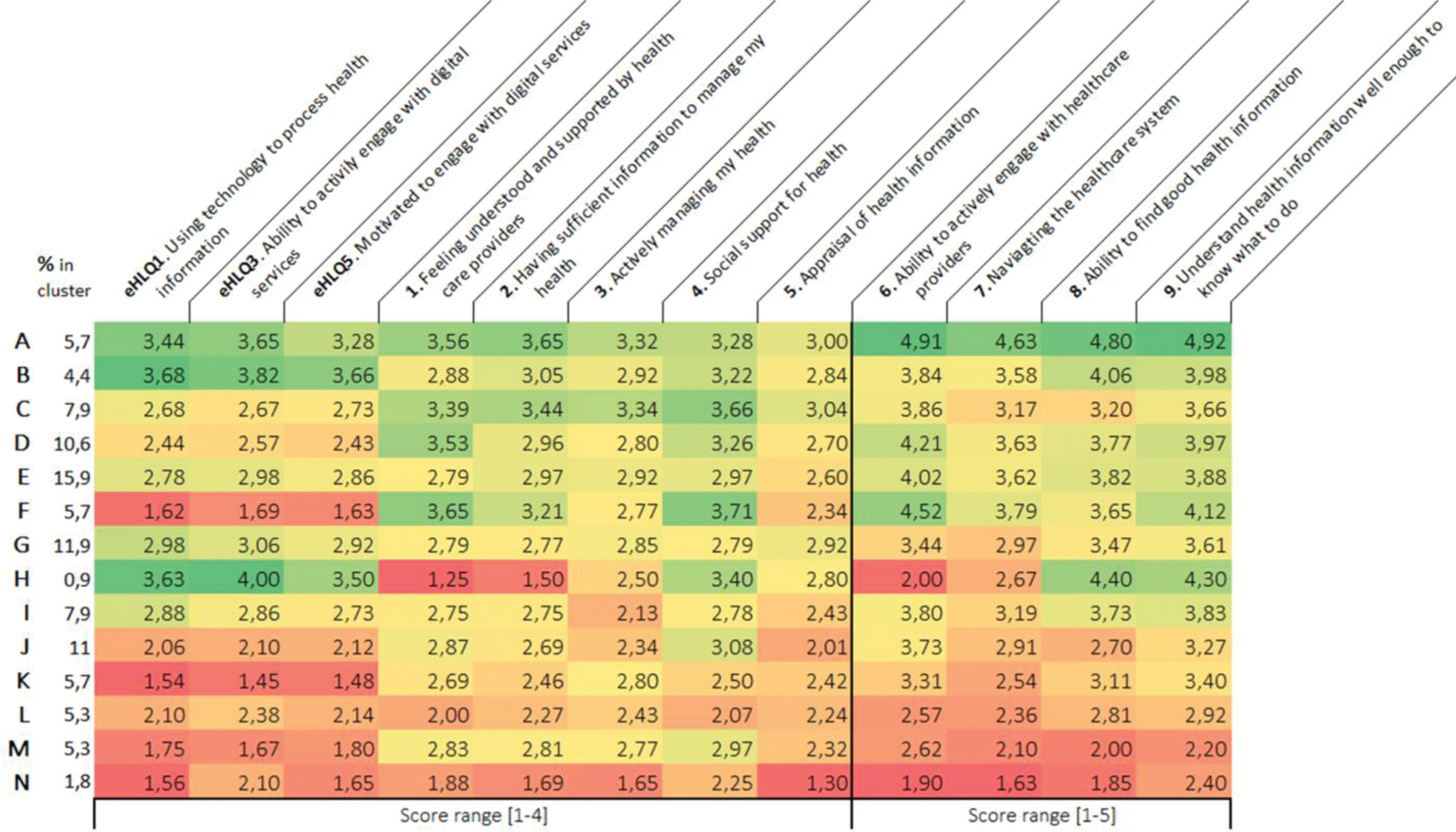

Background: Gout, the most common form of inflammatory arthritis, has a rising incidence, with global prevalence estimates ranging from <1.0% to 6.8% [1]. Treatment centers on urate-lowering medication, but poor adherence often results in suboptimal outcomes. Nurses play a vital role in enhancing self-management and medication adherence [2]; however, workforce shortages often limit the delivery of such services. A nurse-led telehealth intervention emphasizing self-management and medication adherence may provide a new model of care. For such a model to be effective, a co-design approach tailoring patients’ distinctive health literacy (HL) and eHealth literacy (eHL) strengths and challenges is needed.
Objectives: This study aimed to explore the strengths and challenges of HL ad eHL in people with gout, with the goal of identifying distinct patient profiles and generating ideas through co-design to inform the development of a tailored telehealth treatment.
Methods: We applied the Optimising Health Literacy and Access (Ophelia) process [3], a World Health Organization endorsed co-design approach, in this study. Gout patients (ICD-10 M10*) who visited a Rheumatology Department in the Central Denmark Region in 2023 were identified through the Hospital Business Intelligence Register. A survey including the Health Literacy Questionnaire (HLQ) and three scales of the eHealth Literacy Questionnaire (eHLQ), were distributed through Denmark’s national secure electronic mailbox (e-Boks). Patients without e-Boks were contacted via telephone and invited to participate via interview or postal mail. Hierarchical cluster analysis using Ward’s method was performed to identify subgroups with similar score patterns across the nine HLQ scales and three eHLQ scales within the population sample. Semi-structured phone interviews were conducted with participants within each of the identified clusters to gather contextual narrative data. Cluster, interview, and demographic data were then integrated to create vignettes, each representing a fictional person with the characteristics, HL profiles, and health contexts of individuals within that cluster. The vignettes were used to facilitate ideas generation workshops with patients and healthcare professionals to collaboratively brainstorm and develop solutions for tailored telehealth treatment approaches.
Results: Of 511 eligible participants, 260 completed the survey. A total of 87.3% were male with a mean age of 67.7 years (standard deviation 13.4) and 48.5% had been diagnosed ≤3 years. Fourteen distinct HL profiles were identified (Figure 1). Two clusters (cluster A and B) had generally higher scores across all domains while 4 clusters (K to N) encountered challenges across many domains. Clusters F and H represented each other’s opposites. Cluster F showed significant challenges across the eHLQ domains, with low ability and motivation to engage with digital services but had the highest score in ‘Feeling understood and supported by healthcare providers’ among all clusters. In contrast, Cluster H demonstrated the highest ‘Ability to actively engage with digital services’ score but faced the most challenges in feeling understood by health care providers and receiving sufficient information to manage their health.
Heat map of 14 identified health literacy profiles showing mean questionnaire scores per domain.

A total of 11 interviews were conducted with participants from across the clusters. To capture all data, 9 vignettes were developed, each capturing unique characteristics, HL and eHL strengths and challenges, as well as distinct health contexts. Two workshops to discuss the vignettes and generate solution ideas were held with nurses and rheumatologists and two with patients, resulting in more than 30 ideas for digital and non-digital solutions that were collated and coded into themes. The most ideas generated were around themes about improving communication and developing diverse strategies for tailored patient education.
Conclusion: This study examined beyond population means to identify the HL and eHL strengths and challenges of diverse groups of Danish individuals with gout. The ideas generated by the patients and health professionals highlight that standardized telehealth interventions will likely not suit all patients, particularly those experiencing challenges who are often left behind when population means are used to inform interventions. The results of this study will inform the development of a range of digital and non-digital self-management and treatment interventions aimed to optimize equitable health outcomes for patients with gout.
REFERENCES: [1] Dehlin M, Jacobsson L, Roddy E. Global epidemiology of gout: prevalence, incidence, treatment patterns and risk factors. Nat Rev Rheumatol. 2020;16(7):380-90.
[2] Doherty M, Jenkins W, Richardson H, Sarmanova A, Abhishek A, Ashton D, et al. Efficacy and cost-effectiveness of nurse-led care involving education and engagement of patients and a treat-to-target urate-lowering strategy versus usual care for gout: a randomised controlled trial. The Lancet (British edition). 2018;392(10156):1403-12.
[3] Beauchamp A, Batterham RW, Dodson S, Astbury B, Elsworth GR, McPhee C, et al. Systematic development and implementation of interventions to OPtimise Health Literacy and Access (Ophelia). BMC Public Health. 2017;17(1):230.
Acknowledgements: NIL.
Disclosure of Interests: None declared.
© The Authors 2025. This abstract is an open access article published in Annals of Rheumatic Diseases under the CC BY-NC-ND license (